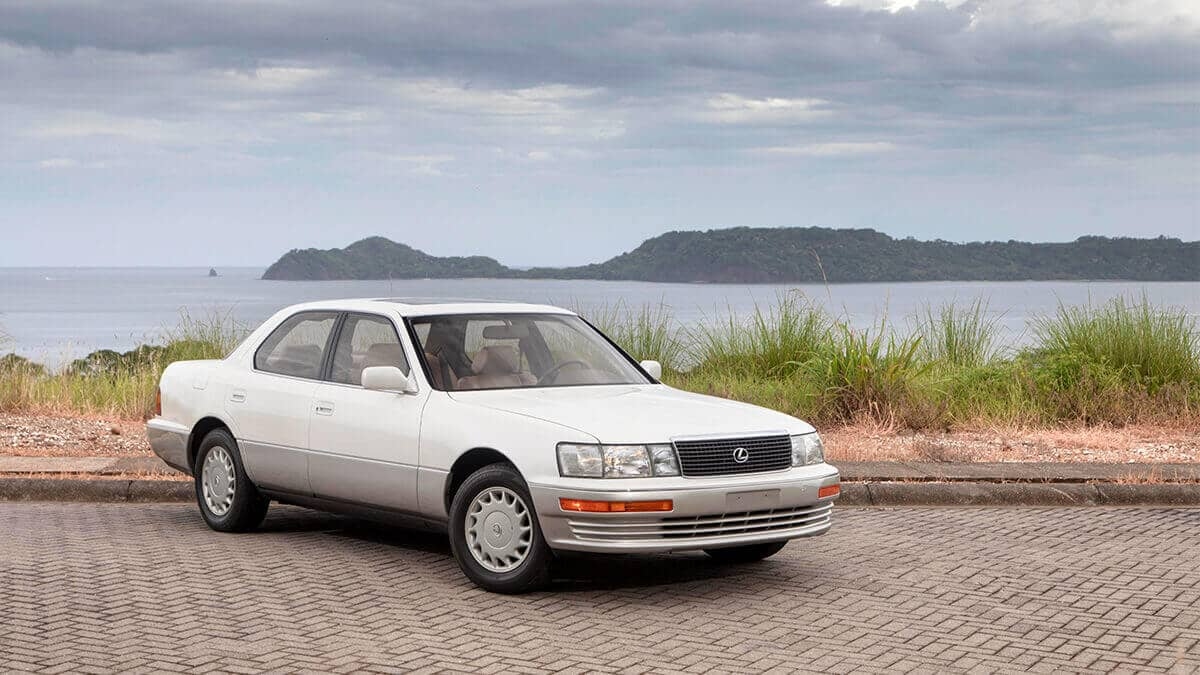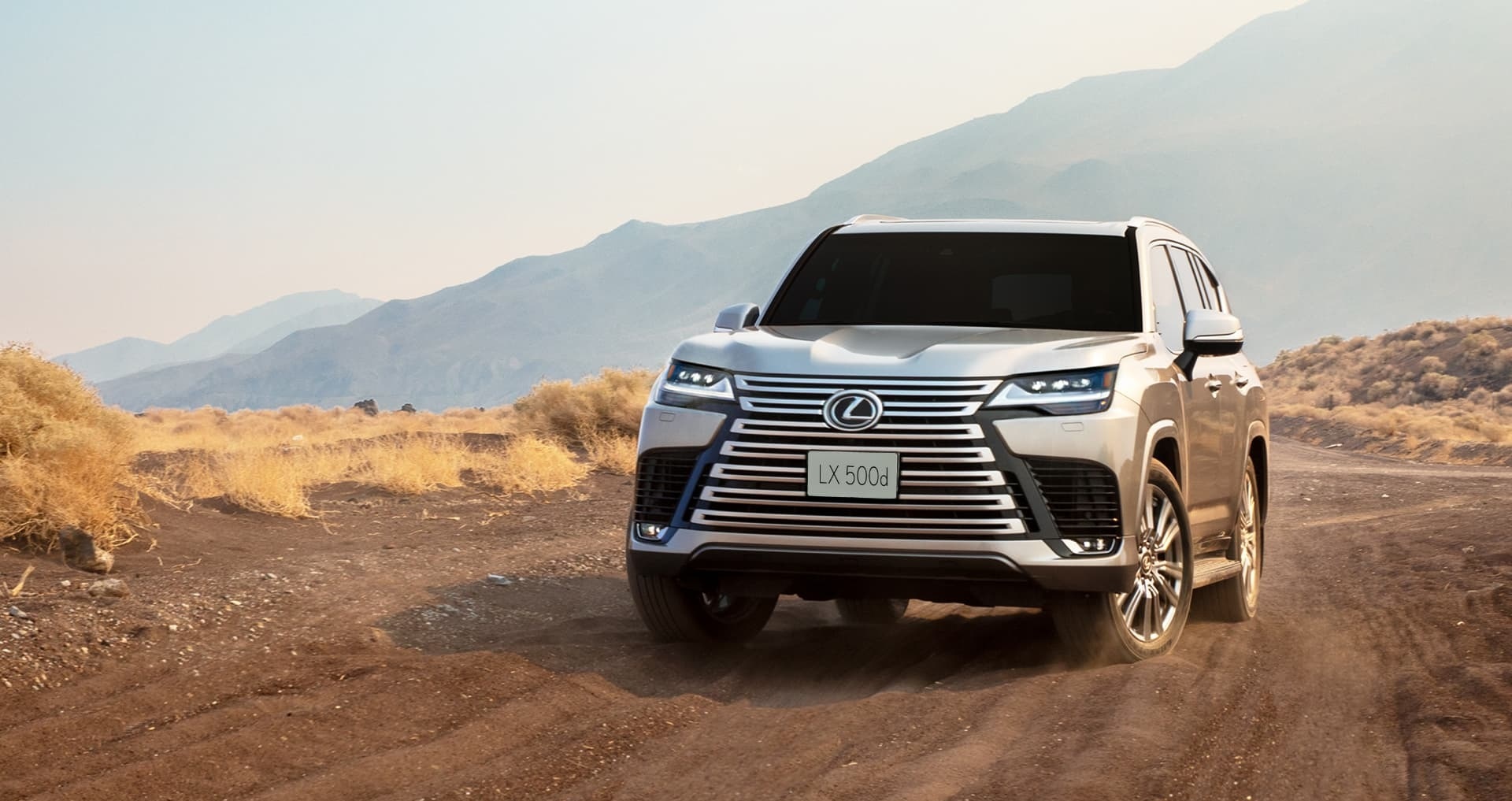Born from a secret Toyota program in the 1980s that set out to build “the world’s best car,” Lexus grew from a single flagship model into one of the most respected luxury marques on the planet. Today, Lexus is synonymous with quiet refinement, engineering rigour, customer obsession, hybrid leadership, and exceptional initial quality—a brand that turned a corporate ambition into a global luxury success story.
The Origin Story: The “Circle F” Project and a Quiet Revolution
The Lexus story began not as a marketing brief but as a technical challenge. In August 1983, Toyota chairman Eiji Toyoda gave engineers an audacious target: produce a flagship sedan that could compete with the best from Europe and the U.S. The initiative, known internally as “Circle F” (for Flagship), marshalled thousands of engineers, hundreds of prototypes, and years of top-secret testing.
The result, unveiled as the LS 400 in 1989 for the 1990 model year, was startling: a car that married near-silent noise, vibration, and harshness (NVH) levels, refined V8 performance, impeccable fit and finish, and build quality that redefined expectations for a Japanese luxury vehicle.
That single car launched the Lexus brand and set the tone for what followed.
Building the Brand: Name, Image, and Positioning

Creating the product was only half the battle. Lexus’s creators also built a new identity around a single-minded proposition: deliver a luxury and ownership experience that would beat incumbents, not just match them on hardware.
An external agency helped narrow hundreds of name options until “Lexus” was chosen. The name was designed to evoke the words “luxury” and “elegance” while also being short, memorable, and globally recognizable.
From the beginning, Lexus invested heavily in the retail experience—shiny, exclusive dealerships and a white-glove service model that treated buyers differently from the mainstream. The playbook was simple and painstaking: obsess over every detail, train dealers to sell a lifestyle, not just a car, and refuse to compromise on quality.
The payoff was a brand that felt premium the moment a customer walked through the showroom door.
Early Wins and Credibility: The Product and “F” Performance
The LS 400’s reception proved the idea. Critics praised its engineering, stealth and materially superior cabin; consumers rewarded it with sales and loyalty. Lexus didn’t stop at sedans—a steady stream of models like the ES (also introduced in 1989) and GS (introduced in 1993) broadened the range and appeal.
The RX crossover, introduced in 1998, was especially pivotal: it created a whole new luxury-SUV category and quickly became one of Lexus’s best-selling nameplates globally.
In addition to expanding the luxury portfolio, Lexus also built performance credibility. The brand’s “F” performance division, officially launched in 2007, and halo projects such as the LFA supercar (produced from 2010 to 2012) were designed to alter perceptions and prove the brand could deliver more than just comfort and quietness.
Pioneering Hybrids in Luxury: Technology as a Differentiator
One of Lexus’s most consequential strategic moves was to make electrification part of its luxury DNA early on. In 2005, Lexus launched the RX 400h, the world’s first luxury hybrid SUV. This created a powerful combination of refinement, fuel economy, and silent, low-speed electric cruising that appealed strongly to premium buyers.
Hybrid systems became a signature strength for Lexus. By building hybrid know-how into expensive, luxury products, the brand carved out a leadership position in electrified premium mobility long before full battery-EVs dominated headlines.
That early investment gave Lexus not only credibility on sustainability but a practical advantage in markets where fuel economy and emissions regulations matter.
Quality and Ownership: How Lexus Built Trust
Luxury is ultimately a promise of ownership, not just a product. Lexus doubled down here, too—relentless assembly line practices, meticulous supplier oversight, and rigorous testing translated into tangible metrics. Lexus has consistently rated at or near the top of quality and reliability studies, most recently earning top positions in the 2025 J.D. Power U.S. Vehicle Dependability Study, its third consecutive win.
This performance reinforced what Lexus always claimed: premium should be proven by fewer problems, better service, and predictable ownership costs.
Going Global: A Deliberate Expansion Strategy
While the brand launched in the U.S. first, Toyota followed a deliberate global roll-out strategy. Notably, Lexus did not sell under its own name in Japan until 2005—an inversion of most export-first brands—but when it did, it entered with its own domestic dealer network to preserve the curated ownership experience.
This global strategy emphasized brand cachet and long-term positioning over volume alone.
In India, for example, the brand made its formal entry in 2017 with a selective dealer footprint and a focus on SUVs and hybrid sedans suited to local tastes.
Design Language and Brand Cues: Subtlety Over Flash

Lexus’s design evolution moved from conservative luxury to a more distinctive face, defined by the signature spindle grille. But more importantly, Lexus learned to wield restraint. Interior materials, acoustics, ergonomics, and thoughtful details became the brand’s signature.
Where competitors chased overt opulence, Lexus doubled down on craftsmanship, quietness, and a detail-oriented approach that owners notice every time they get behind the wheel. That approach helped Lexus maintain an aura of refined luxury rather than flamboyant excess.
Why Lexus Matters Today
Three forces explain Lexus’s endurance and continued success:
- Credibility built on engineering—Lexus delivered measurable differences in quietness, durability, and fit-and-finish that customers could feel on day one.
- Differentiation through hybrids and experience—While competitors rushed to EVs, Lexus leveraged hybrid systems to offer quieter, cleaner luxury sooner. That early lead translated into millions of hybrid Lexus vehicles sold worldwide.
- A customer-first retail model—Lexus’s dealer and service approach reinforced brand promises, kept satisfaction high, and supported resale values.
These elements make Lexus more than just a premium badge; it’s a trusted, measurable luxury proposition for buyers who value long-term ownership quality.
Final Thoughts: The Legacy of a Carefully Built Luxury Brand
Lexus’s story is a lesson in disciplined brand creation. It began with an engineer’s brief, matured through relentless attention to detail, and then extended into a retail and service model that preserved the product promise. The brand’s willingness to invest in quality, hybrids, dealer standards, and the customer experience turned a Toyota ambition into a global luxury proposition.
For buyers, Lexus offers a predictable, high-quality ownership experience; for the industry, it demonstrates how technology, culture, and long-term thinking can build a durable luxury house.
Want to dive deeper into automotive history? Follow Motozite for more fascinating insights. And if you’re in the market for a vehicle that embodies luxury, innovation, and refined performance, don’t hesitate to inquire today, because when it comes to elevating every journey, Lexus is the sophisticated choice.

